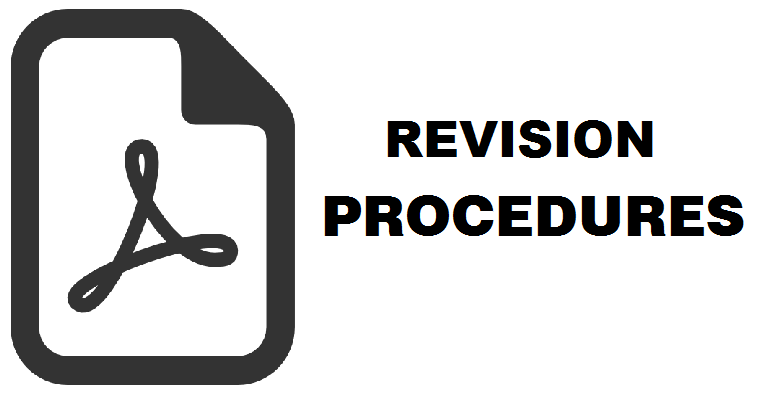Integrasi Transformasi Spektral Citra Landsat Etm+ dan SIG untuk Pemetaan Pola Rotasi Tanam Lahan Sawah Kabupaten dan Kota Semarang serta Daerah Sekitarnya di Jawa Tengah
Sri Retno Murdiyati(1*), Projo Danoedoro(2), Retnadi Heru Jatmiko(3)
(1) Balai Besar Penelitian dan Pengembangan Sumber Daya Lahan Pertanian
(2) Fakultas Geografi, Universitas Gadjah Mada, Yogyakarta
(3) Fakultas Geografi, Universitas Gadjah Mada, Yogyakarta
(*) Corresponding Author
Abstract
ABSTRAK Pengurangan daerah beras seiring dengan meningkatnya populasi memberikan dampak pada ketersediaan pangan. Yang sesuai dan optimal manajemen beras yang diperlukan dengan mempertimbangkan sumber daya iklim dan pola tanam yang tepat waktu di lahan pertanian produktif, untuk mendukung kebutuhan dasar makanan untuk masyarakat, serta memberikan dukungan untuk Ketahanan Pangan Nasional. Studi ini dimaksudkan untuk menyelidiki keakuratan penggunaan spektrum nilai proses transformasi dan GIS untuk mengidentifikasi dan inventarisasi rotasi pola tanam di sawah dengan approach.The ekologi metode penelitian terdiri dari interpretasi klasifikasi multi-temporal ETM + Landsat digital dibantu menggunakan algoritma kemungkinan maksimum diawasi, dan dibantu dengan proses transformasi nilai spektral dari Analisis Principal Component (PCA), NDVI dan Tasseled Cap Transformasi (TCT). ETM + Landsat data yang digunakan adalah 5 Desember 2000, 24 April 2001, dan 1 Juli, 2001 di 120/065 path / row. Analisis ini selesai melalui membandingkan hasil dari proses transformasi Principal Component Spectral Analysis (PCA), NDVI dan Tasseled Cap Transformasi (TCT) dan proses transformasi gabungan dari tiga dari mereka, dengan hasil yang diperoleh dari klasifikasi tutupan lahan menggunakan saluran asli. Peran GIS dalam penelitian mengumpulkan data pendukung seperti peta zona agroklimat, peta tanah, peta bentuk lahan, peta sawah irigasi, dan setelah itu dilapisinya semua dari mereka untuk pola tanam peta, dengan mengikuti tanda-tanda, untuk menghasilkan beras tanam peta rotasi pola. Hasil penelitian menunjukkan bahwa secara terpisah menggunakan proses transformasi nilai-nilai spektral multi-temporal yang disediakan akurasi rendah, tetapi dengan visual yang jelas, yaitu Principal Component Analysis, NDVI dan Tasseled Cap Transformasi 96,13%, 68,17%, dan 92,44% . Hasil akurasi dari proses transformasi spektral gabungan memberikan nilai 92,61%. Penggunaan multi-temporal Landsat band asli memberikan nilai akurasi 98,77%. Pola rotasi padi tanam diidentifikasi di daerah penelitian adalah 1x / tahun, 2x / tahun, bidang 3x / tahun beras, dan pertanian lahan kering. Kesimpulan dari penelitian ini adalah penggunaan transformasi spektral bersama-sama tidak memberikan akurasi yang lebih tinggi dibandingkan penggunaan secara individu spektral transformasi baik penggunaan saluran asli di multi-temporal. Penelitian lebih lanjut dengan menggunakan media-resolusi Remote Sensing Gambar beberapa prosedur yang berbeda dalam konteks pemantauan sawah dianggap perlu.
ABSTRACT The reduction of rice area along with the increase of population gives an impact on the food availability. The appropriate and optimal management of rice are required by considering the climate resources and timely cropping pattern at the productive agricultural land, to support the basic needs of food for the communities, as well as providing support for the National Food Security. The study intended to investigate the accuracy of the use of the spectral values transformation process and GIS in order to identify and inventory the rotation of cropping pattern in rice field with an ecological approach.The research methods consist of the interpretation of multi-temporal classification of Landsat ETM+digitally assisted using supervised maximum likelihood algorithm, and assisted with the transformation process of the spectral value of a Principal Component Analysis (PCA), NDVI and Tasseled Cap Transformation (TCT). Landsat ETM+ data used are December 5, 2000, April 24, 2001, and July 1, 2001 at the 120/065 path/row. The analysis was finished through comparing the results from the transformation process of Principal Component Spectral Analysis (PCA), NDVI and Tasseled Cap Transformation (TCT) and the combined transformation process from three of them, with the results obtained from the classification of land cover using the original channel. The role of GIS in the research are collecting supporting data like agro-climate zones maps, soil maps, landform maps, maps of irrigated paddy fields, and afterward overlaid all of them to the cropping patterns map, by following the signs, to produce rice cropping rotation pattern maps. Results showed that the separately use of the transformation process of multi-temporal spectral values provided low accuracy, but with an obvious visuals, namely Principal Component Analysis, NDVI and Tasseled Cap Transformation of 96,13%, 68.17%, and 92,44%. The accuracy results from the combined spectral transformation processes give a value of 92,61%. The use of multi-temporal Landsat original band gives the accuracy value of 98.77%. The rice cropping rotation patterns identified in the study area are 1x /year, 2x /year,3x /year rice fields, and upland farming. The conclusion from this research is the use of spectral transformation together does not give a higher accuracy than the use of individually spectral transformation either the use of the original channel in a multi-temporal. The further research using medium-resolution Remote Sensing Image for several different procedures in the context of rice field monitoring is considered necessary.
Keywords
Full Text:
PDF (Bahasa Indonesia)Article Metrics
Refbacks
- There are currently no refbacks.
Copyright (c) 2016 Majalah Geografi Indonesia

This work is licensed under a Creative Commons Attribution-ShareAlike 4.0 International License.
Volume 35 No 2 the Year 2021 for Volume 39 No 1 the Year 2025
ISSN 0215-1790 (print) ISSN 2540-945X (online)








